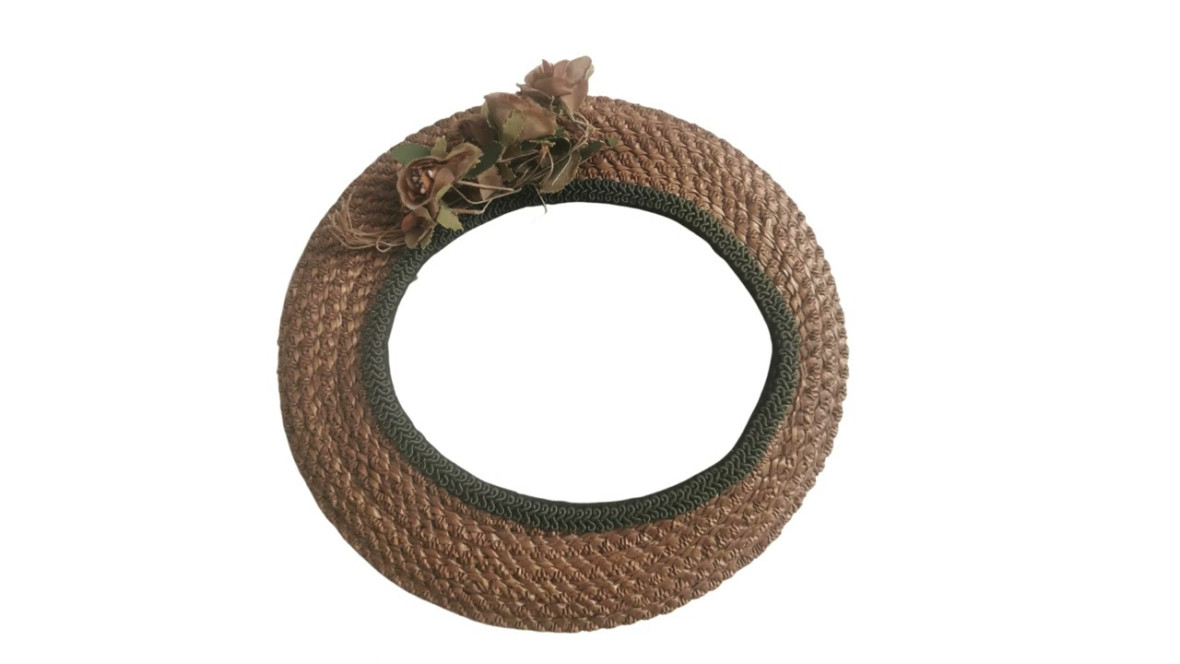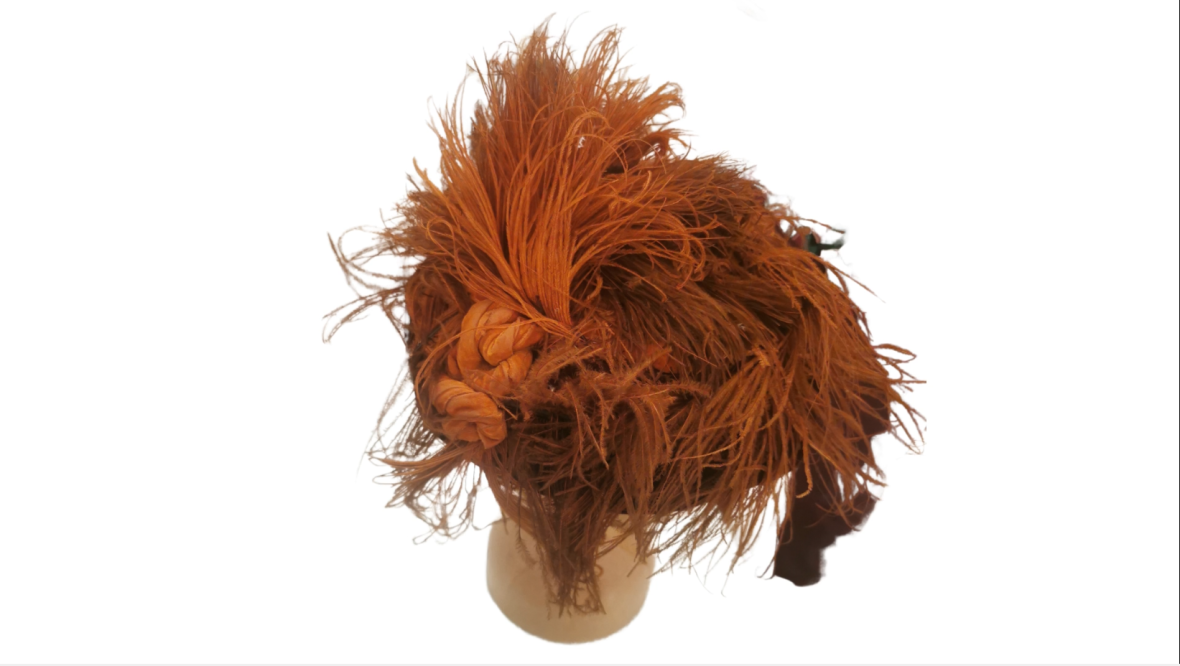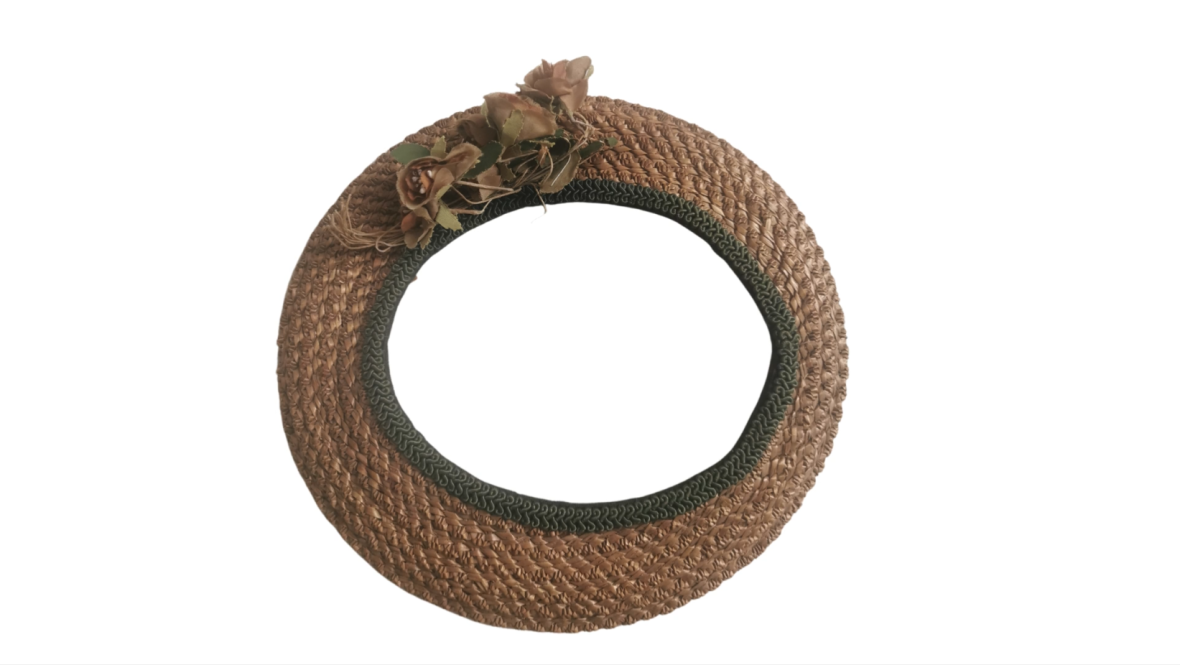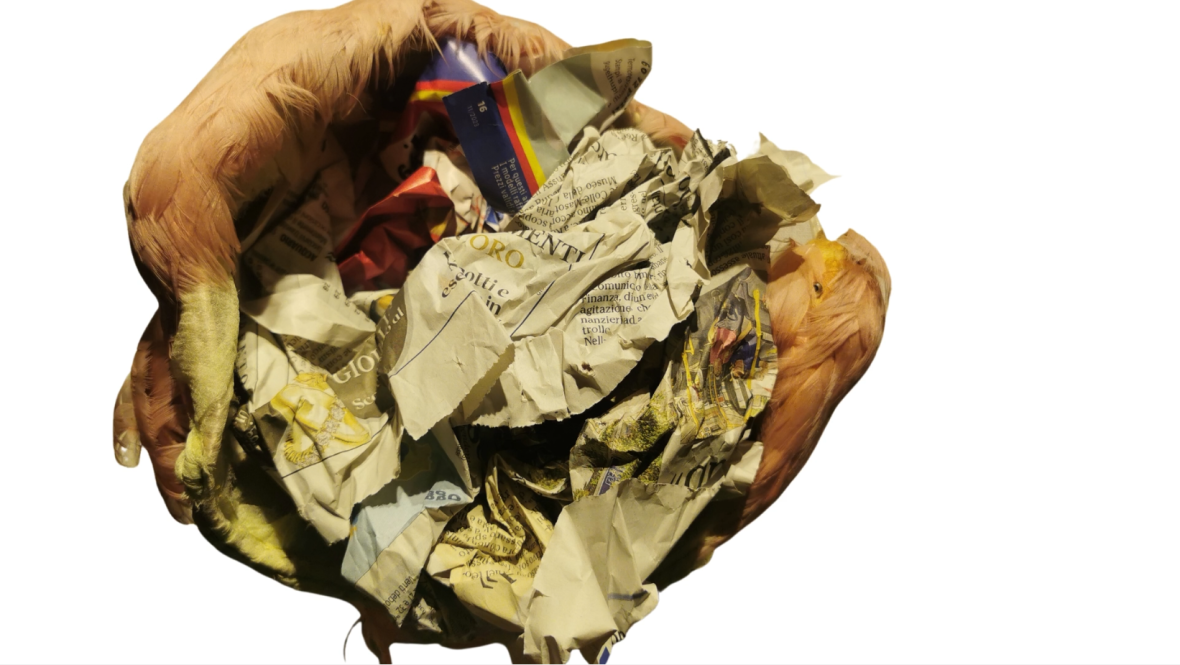Feathered Hats, Combative Women, and Creative AI
06.11.2023
The three transparent boxes on display contain a burgundy velvet hat adorned with lavish brown feather-work, a straw hat brim with feathers, leaves and flowers draped over it to form a nest, and a third hat topped with pink feathers and a stuffed bird's head. These items of headwear take centre stage at a "Tiny Gallery" presented by RIFS Art Fellow Susanne Schmitt at the Berlin Science Week. Together, they highlight the pivotal role that hats and hat-making played in the development of environmental and wildlife conservation. The gallery is part of the exhibition "Dare to Know: Creative Science, Precise Art" on show at Holzmarkt 25 through to 10 November.
“Mobile diorama” is the term that Susanne Schmitt uses to describe her elaborate creations, the youngest of which is probably around 60 years old. In the mid-nineteenth century, hats decorated with feathers and stuffed birds were wildly popular among middle class women, with demand for plumage driving some species to the brink of extinction – or beyond. Conservationists, led by prominent women in Europe and the USA, eventually came to their rescue, however. In the early twentieth century, new laws were enacted that put a stop to the harvesting and international trade in birds and plumage.
An inspiration for environmentalism today
The bird conservationists’ ambitious and creative campaigns have influenced environmental movements to this day, Schmitt explains: "Many of the strategies used today – from PR events to hunger strikes – were developed in the struggle against the plumage trade. Major environmental organizations such as the Royal Society for the Protection of Birds in the United Kingdom and the Audubon Society in the USA were founded in the wake of this environmental activism." A display offers visitors to the exhibition an overview of the history.
However, Schmitt also draws on some very modern science in her work, using AI to generate images of a hat-maker’s studio that create an evocative atmosphere in her gallery space. She acquired the hats on display during her year-long fellowship at RIFS, visiting flea markets and thrift stores and scouring the internet. A hat-maker and several botanists assisted her with their expertise in preparing the hats and exhibition.
AI’s creative take on artistic hat-making
When Schmitt compared the information provided by these experts with the results of several AI-powered apps for identifying plants and animals, she was fascinated. “AI output is rarely correct, but it offers creative inspiration that can take you in an entirely new direction. For example, the straw hat brim is adorned with a silk flower that was added later. To my eye, it was a kind of abstract rose. But a plant recognition app identified the flower as geum rivale, the water avens. Suddenly, the hat told a story about the decline of meadow- and wetlands."
It takes people who are at once empathetic and analytical to make sense of AI output – and to break new ground in species conservation. The stories behind the hats and the feathers themselves reveal the fragility of nature: Sometimes, Susanne Schmitt recounts, all it takes is a single touch to turn a feather into oily dust.
Media
Video: “To be of service.” Speculative millinery’s tiny worlds of consequence

Photo Gallery
This year’s Berlin Science Week will tread new ground with a special exhibition – titled "Dare to Know: Creative Science, Precise Art” – that explores the fruitful interaction of artistic practice and scientific rigor. Susanne Schmitt's work "To be of service. Speculative millinery's tiny worlds of consequence" is one of eight Tiny Galleries at the exhibition.
Featuring diverse formats, ranging from classical art installations and artist talks to science slams, comedy and live performances, and workshops, "Dare to Know: Creative Science, Precise Art” will highlight the potential of scientific methods, approaches, and research findings. Offering opportunities for emotional as well as aesthetic engagement, the artworks on display will foster an innovative debate.



